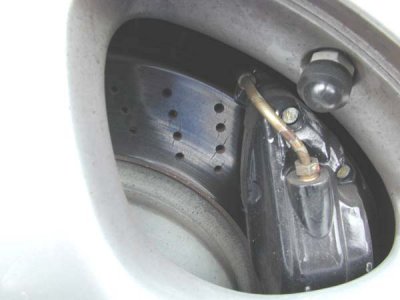drilled is not the same as casted
I know that. I think that 99% of the people savvy about brakes say "drilled" with the understanding that the rotors have the holes cast into the blanks, and during the machining process the holes are chamfered to eliminate the stress-riser associated with a square edge where the hole meets the wear surface of the rotor. Anyone who would take a solid rotor and convert it by simply drilling holes between the cooling vanes, is an idiot.
Rotor size and bling bling factors are still present in P-cars and Ferraris.
Gonna show some ignorance here, but what is bling-bling with those two cars as it relates to brakes?
From engineering standpoint, I don't think most aftermarket manufacturers have done nearly the research Ferrari or Porsche has done on their brake components.
Actually, for the Italian car, the brakes are by Brembo. In fact, for that Italian race team, Brembo develops the brakes, not Ferrari. Ferrari may have a hand in design such as location of the caliper to minimize CG but the actual development of the technology is by Brembo. Therefore, since the world's leading brake component manufacturer supplies brakes to Ferrari, my phrase of "if it is good enough for Ferrari it is good enough for me" has valid credability. Especially since Brembo is showing up on more and more production cars - WRZ, Nissan's Z, G35 (?), Evo, Mustang Cobra, etc.
Just saying that drilled is good because P-cars and F-cars use them doesn't make them good for you.
Yes it does because I (and you and fellow NSXers) am not a professional race car driver; therefore, for occasional HPDEs, solid rotors are not promised to last any longer than rotors with holes in them.
If you go to various professional racing events, you will see many race cars that do not use drilled rotors whatsoever.
See previous comment.





